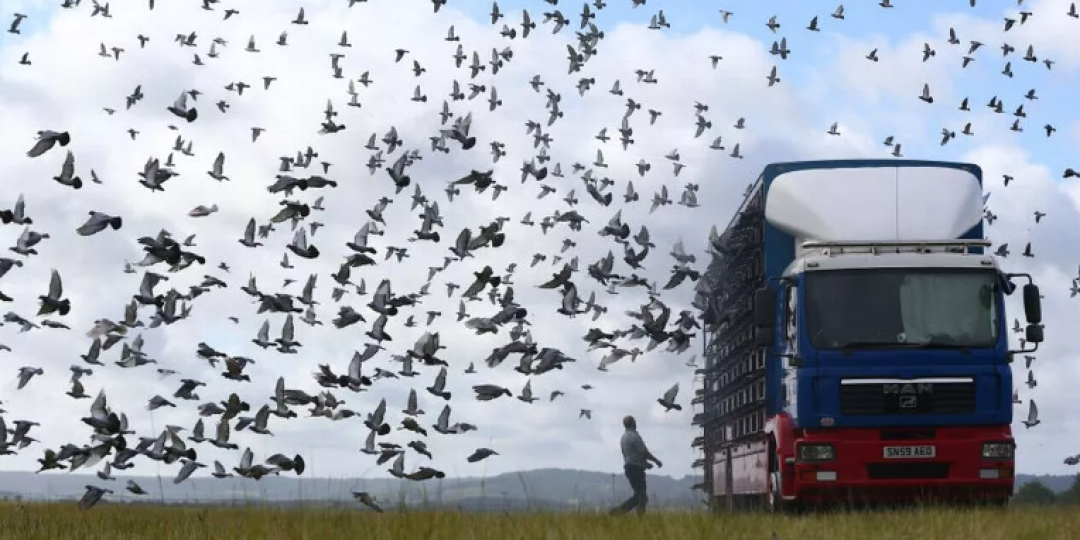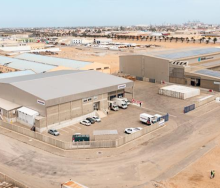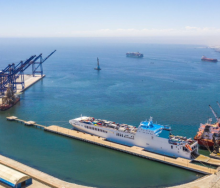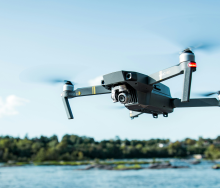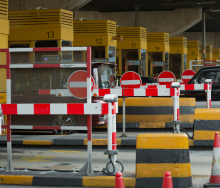From Durban in KwaZulu-Natal (KZN) two 2.8 tonners begin a circuit that starts with loading on Thursday, proceeds with a day of travelling on Friday, and finally culminates in a race on Saturday when the cargo is “liberated” – the term used to release racing pigeons.
Customised trucks for this winter sport carries 800 to a 1000 racing pigeons to destinations across South Africa.
After being liberated, the birds race back to their home lofts, each completing its own race.
The fliers can reach up to 140 kilometres per hour in races with a strong tailwind.
Ordinarily, the average speed is between 80 to 90kph.
Their travel arrangements in specially designed vehicle trailers is a complex operation according to Rob Heerman, a pigeon breeder from Hillcrest-based in KwaZulu-Natal.
He told Freight News: “We have transporting duties that can be difficult as the birds are delicate and come from different home environments, so the treatment by the transporter is very important.
“The loading at different clubs must also be undertaken within clear guidelines, such as how many birds are in each basket because that's where they will spend the duration of the trip.
“For transporting, we rely heavily on the driver and his assistant who have to be careful on the road, monitor the weather and undertake feeding and watering at select hours because the digestive system of the birds is very quick.
“If not done correctly it compromises the racers and will affect performance.”
Picking up pigeons takes place each Thursday, in preparation for the actual transport from Durban to destinations where the race begins.
These destinations are as far afield as Kimberley, Zeerust, Marble Hall, Pietersburg, Musina and Upington.
Each destination provides different distances for the birds to race home.
Any transport stops along the way are undertaken only in predetermined safe areas.
This can be at a filling station or police station for security reasons.
Vehicles are permanently monitored using GPS and sustained communication with drivers is essential to the successful transportation of racing pigeons.
A major fear is a breakdown or snarl-up due to accidents or protests and can require security, if necessary until the vehicle can be repaired or towed to a safe place.
In such instances, trip plans must be hastily revised to make the Friday night stopover.
On official race day, the birds must be taken to the starting point where a pigeon fancier oversees the liberation of the birds.
The person overseeing the release must assess weather conditions to make sure that the birds are not compromised in any way.
All releases must also be checked for nearby overhead power lines, game fences and other potential obstacles for the birds.
Should the start on Saturday not be possible, then Sunday is a reserve day. Should that not be possible, the vehicle is moved to another point much closer to the home destination and the birds are released for what is regarded as a training flight.
“Once liberated in an official race the pigeons head home and are clocked, either with rubber bands or an electronic system that is scanned automatically,” Heerman said.
Although there is not much prize money in an average season, it is done for the love of the sport and the thrill of the race.
However, South Africa held a million-dollar prize money race which ended at Sun City in 1999 making it the then richest race in the world.
Today the richest race in South Africa carries a prize purse of $500 000, which ends in Limpopo.
There is an annual race that ends at Victoria Falls in Zimbabwe which carries a purse of $1.5 million for the fastest birds, the biggest purse on offer in Southern Africa.
Races to foreign destinations, such as the one to Vic Falls is a South African innovation – a “one-loft” race.
Competing birds can be brought from anywhere in the world and then lodged at the finishing point of the race for a long enough period for them to begin to regard it as home.
